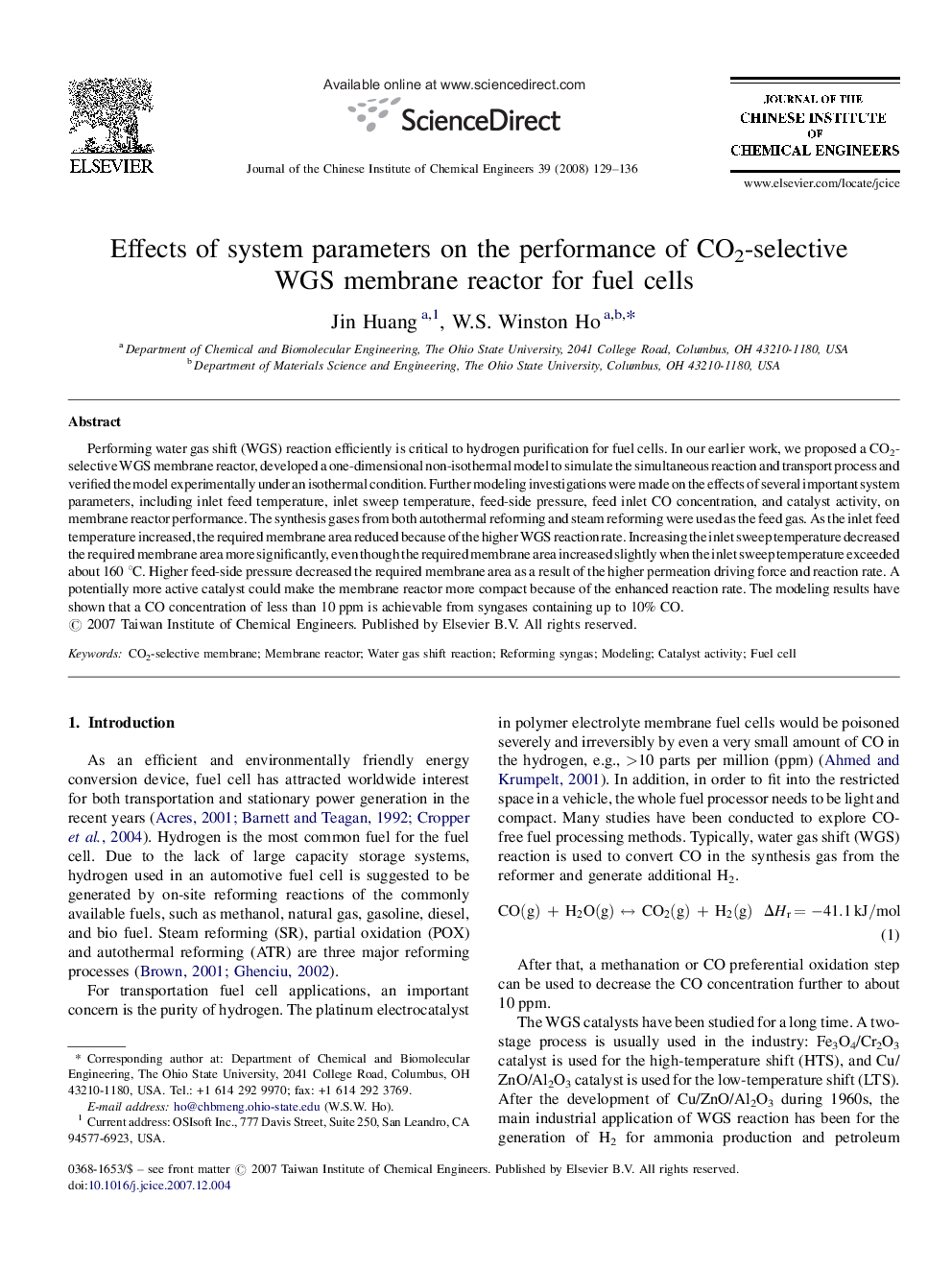| Article ID | Journal | Published Year | Pages | File Type |
|---|---|---|---|---|
| 217638 | Journal of the Chinese Institute of Chemical Engineers | 2008 | 8 Pages |
Performing water gas shift (WGS) reaction efficiently is critical to hydrogen purification for fuel cells. In our earlier work, we proposed a CO2-selective WGS membrane reactor, developed a one-dimensional non-isothermal model to simulate the simultaneous reaction and transport process and verified the model experimentally under an isothermal condition. Further modeling investigations were made on the effects of several important system parameters, including inlet feed temperature, inlet sweep temperature, feed-side pressure, feed inlet CO concentration, and catalyst activity, on membrane reactor performance. The synthesis gases from both autothermal reforming and steam reforming were used as the feed gas. As the inlet feed temperature increased, the required membrane area reduced because of the higher WGS reaction rate. Increasing the inlet sweep temperature decreased the required membrane area more significantly, even though the required membrane area increased slightly when the inlet sweep temperature exceeded about 160 °C. Higher feed-side pressure decreased the required membrane area as a result of the higher permeation driving force and reaction rate. A potentially more active catalyst could make the membrane reactor more compact because of the enhanced reaction rate. The modeling results have shown that a CO concentration of less than 10 ppm is achievable from syngases containing up to 10% CO.
